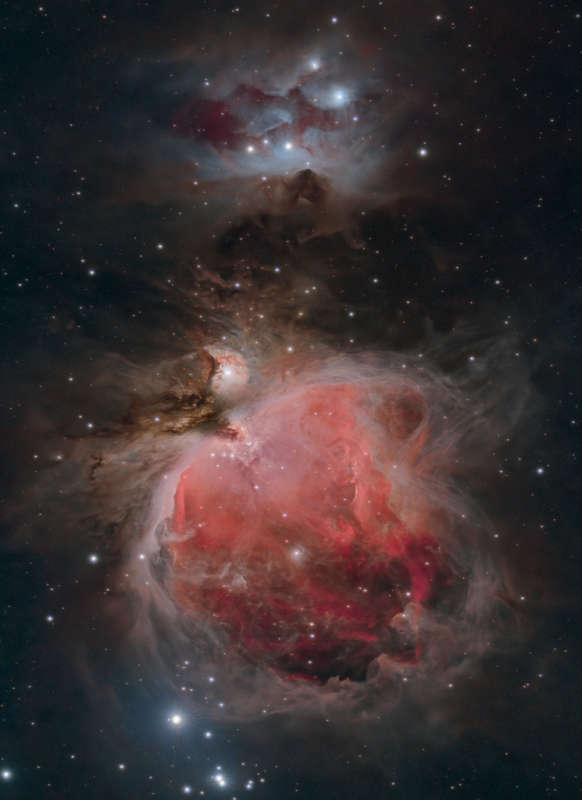
|
Credit & Copyright: Abraham Jones
Explanation:
Few cosmic vistas excite the imagination like
The Great Nebula in Orion.
Visible as a faint celestial smudge
to the naked-eye,
the nearest large star-forming region sprawls across
this sharp telescopic image,
recorded on a cold January night in dark skies
from West Virginia, planet Earth.
Also known as
M42,
the Orion Nebula's glowing gas surrounds
hot,
young stars.
About 40 light-years across, it lies at the edge of an immense interstellar
molecular cloud
only 1,500 light-years away
within the same spiral arm of our Milky Way galaxy as the Sun.
Along with dusty bluish reflection nebula
NGC 1977 and friends
near the top of the frame,
the eye-catching nebulae represent only a
small fraction of our
galactic neighborhood's
wealth of star-forming material.
Within the well-studied stellar nursery,
astronomers have also identified
what appear to be numerous
infant solar systems.
|
January February March April May June July August September October November December |
| ||||||||||||||||||||||||||||||||||||||||||||||||
NASA Web Site Statements, Warnings, and Disclaimers
NASA Official: Jay Norris. Specific rights apply.
A service of: LHEA at NASA / GSFC
& Michigan Tech. U.
Based on Astronomy Picture
Of the Day
Publications with keywords: M 42 - Orion Nebula
Publications with words: M 42 - Orion Nebula
See also:
- Orion and the Running Man
- APOD: 2025 August 13 B Trapezium: In the Heart of Orion
- APOD: 2025 April 20 B The Orion Nebula in Visible and Infrared
- APOD: 2024 November 4 B M42: The Great Nebula in Orion
- APOD: 2024 September 10 B Horsehead and Orion Nebulas
- Trapezium: At the Heart of Orion
- APOD: 2023 October 10 B Hidden Orion from Webb
